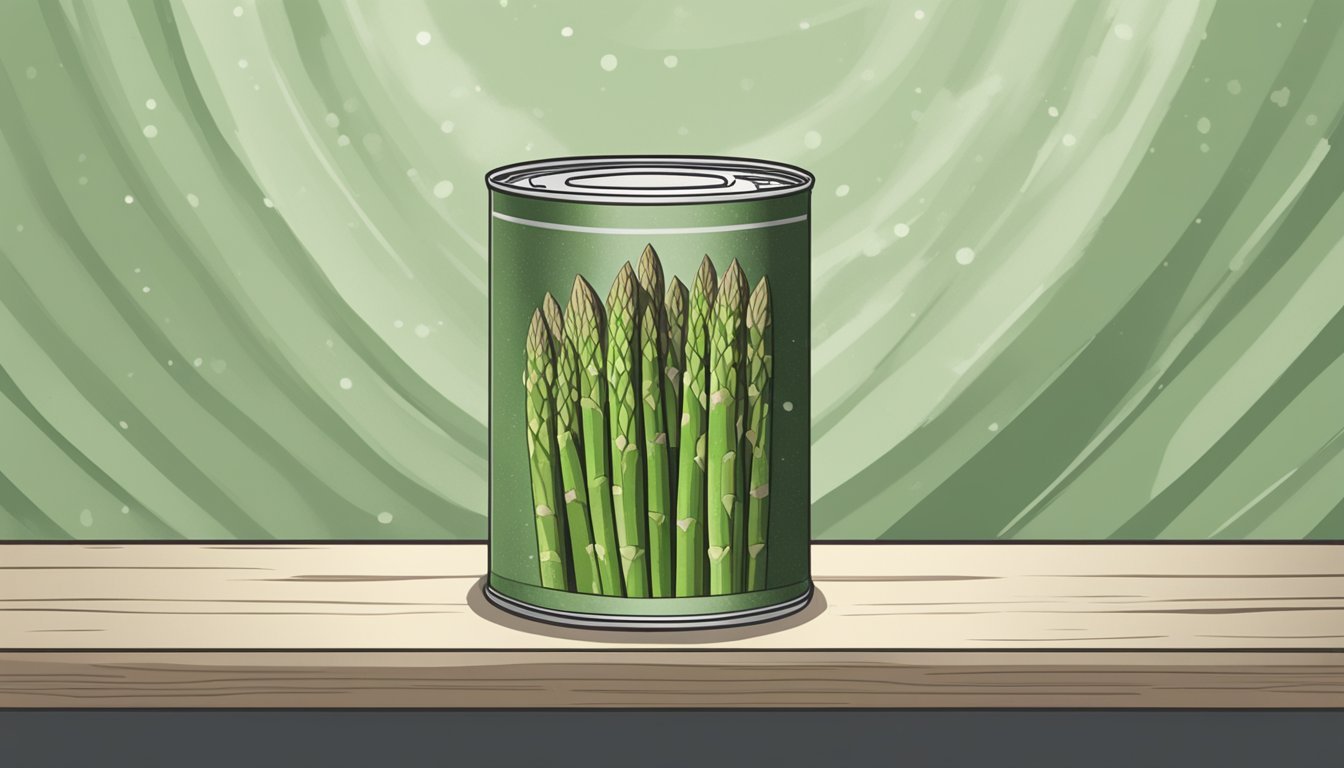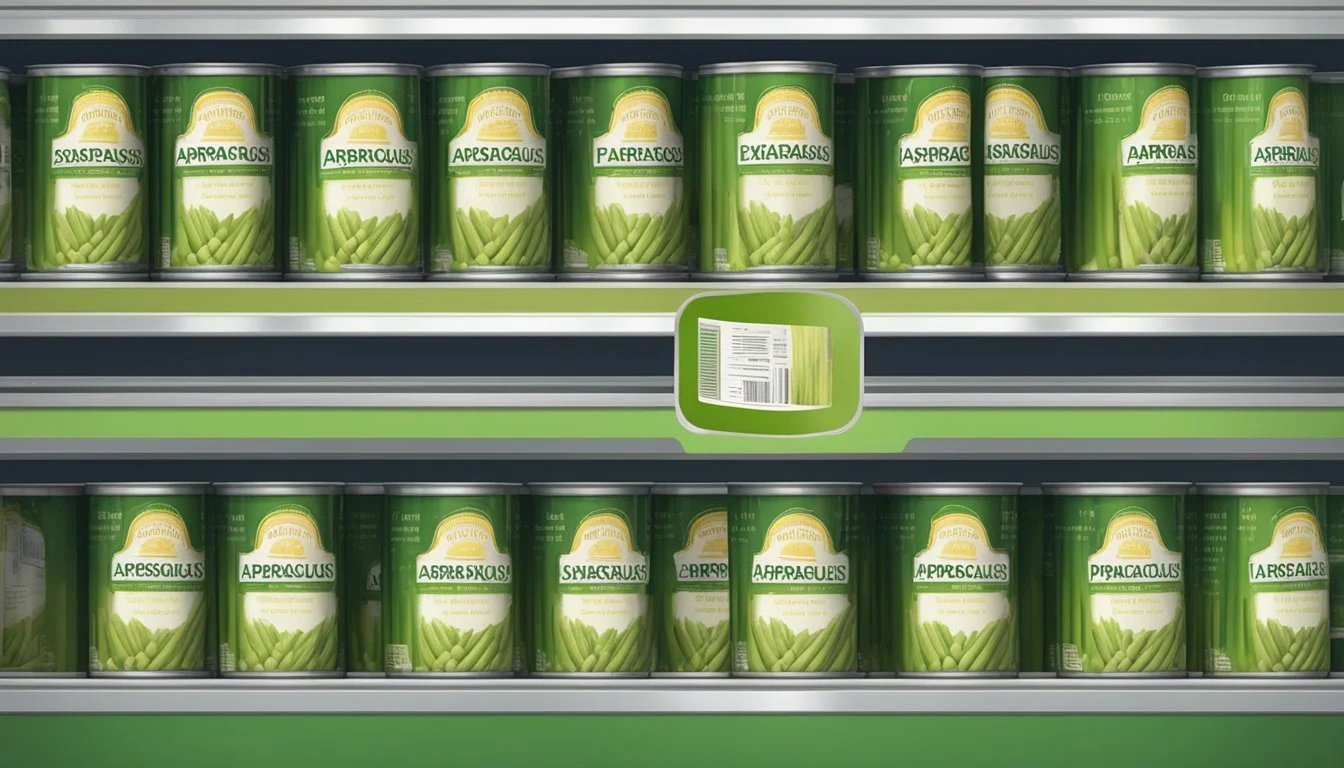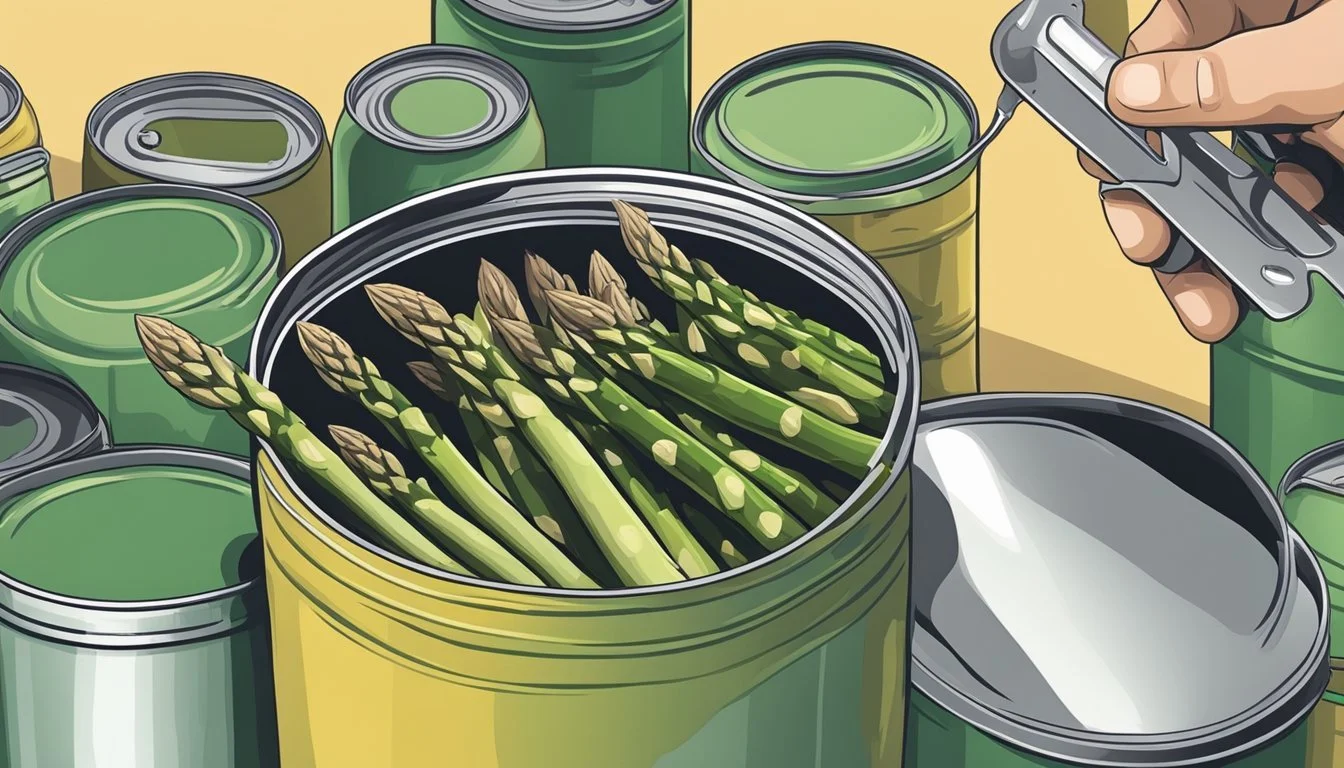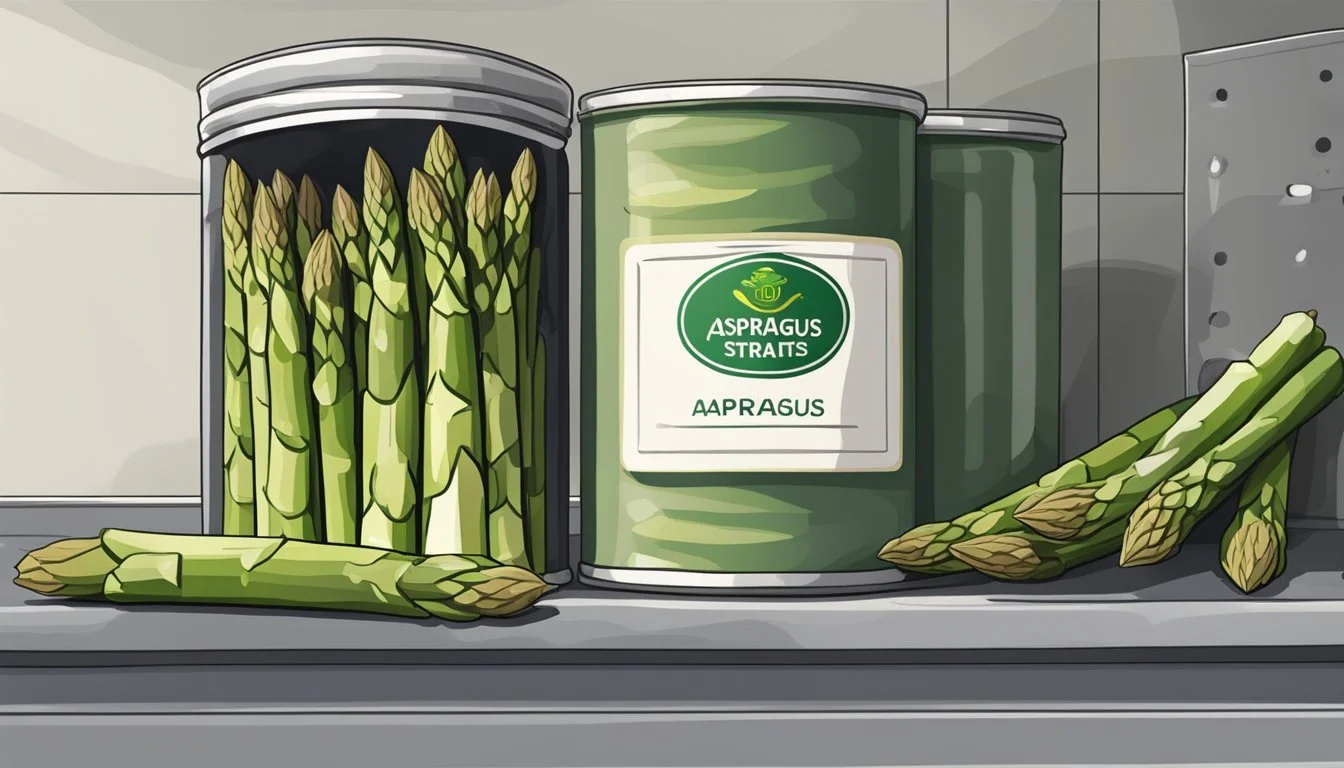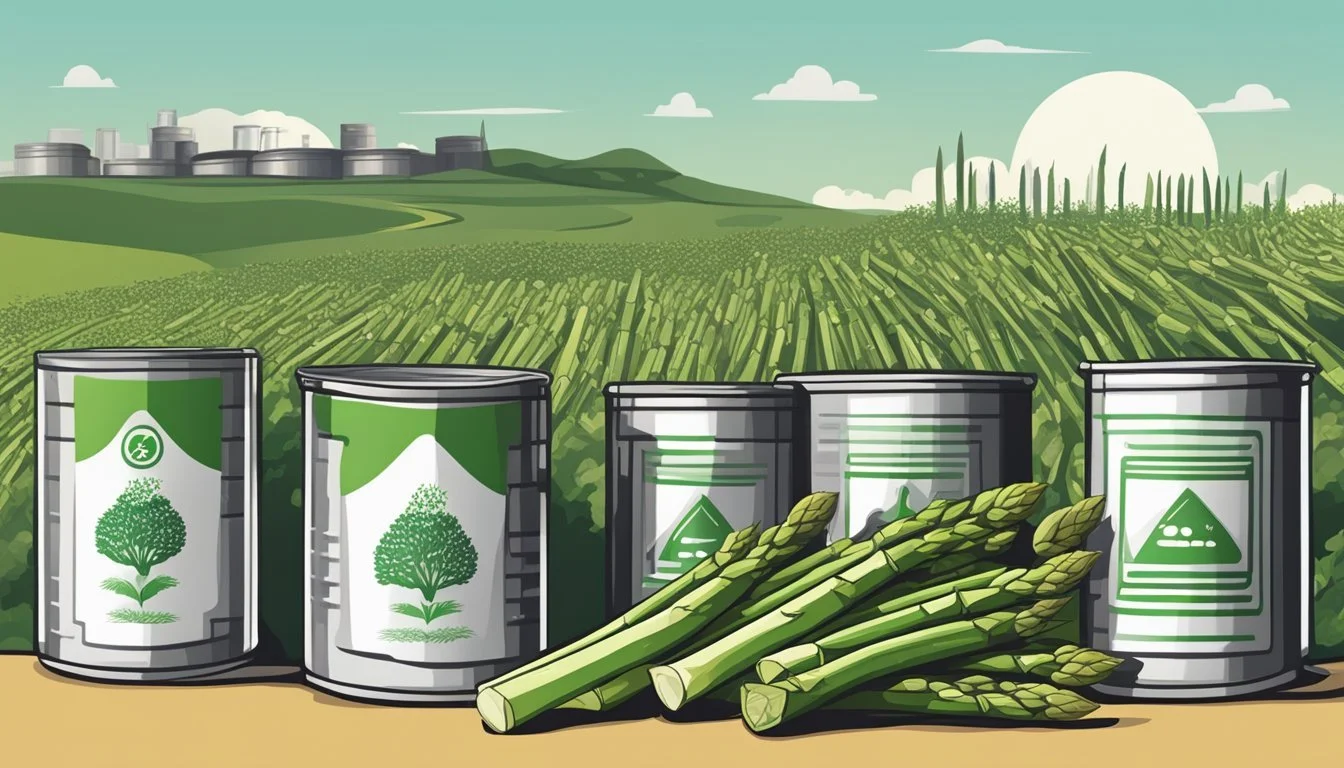Does Canned Asparagus Expire?
Shelf Life and Storage Tips
Canned asparagus, like many other canned vegetables, has a remarkably long shelf life if stored properly. Unopened canned asparagus generally maintains its best quality for about 3 to 5 years when stored in a cool, dry place. After this period, it can still be safe to eat for even longer, though its taste and texture might start to decline.
The key to ensuring the longevity of canned asparagus is proper storage. Keeping the cans in a stable environment away from extreme temperatures and moisture will help maximize their shelf life. Proper storage conditions prevent the cans from rusting or developing other issues that could compromise the food's safety.
Despite its long-lasting nature, canned asparagus is best when consumed before the expiration date for optimal flavor and quality. Signs that canned asparagus has gone bad include a noticeable off-odor, discoloration, or any bulging or leaking of the can. When in doubt, it is always safer to discard any questionable cans.
Understanding Canned Asparagus
Canned asparagus involves a specific preservation process and offers a unique nutritional profile. This makes it a convenient vegetable choice with a consistent texture and flavor.
Canning Process
The canning process for asparagus involves several key steps. Fresh asparagus is first washed and trimmed to remove any tough or inedible parts. The stalks are then blanched briefly in boiling water, which helps preserve their color and texture.
Blanched asparagus is placed in cans, which are then filled with water containing a small amount of salt or other preservatives. The cans are sealed hermetically to create an airtight environment, preventing bacteria and other microorganisms from spoiling the content. The final step involves heating the sealed cans to a high temperature, which effectively sterilizes the contents, making them shelf-stable for extended periods.
Canned asparagus retains much of its flavor and texture due to this process. However, choosing cans without significant dents, rust, or bulges is crucial to ensure safety and quality.
Nutritional Profile
Canned asparagus is a nutritious option among canned foods, offering several essential vitamins and minerals. A typical serving provides a good source of vitamin K, vitamin C, and folate, as well as dietary fiber, which aids in digestion.
The canning process may reduce some of the asparagus's vitamin content. However, many nutrients remain intact. Protein content is relatively low but still present.
The preserved nature of canned asparagus offers a reliable nutritional value compared to fresh vegetables. It’s convenient for those looking to maintain a balanced diet with shelf-stable vegetables. While the flavor and texture may differ slightly from fresh asparagus, the nutritional benefits make it a worthwhile inclusion in a variety of dishes.
Safety and Storage
Ensuring the safety and proper storage of canned asparagus is essential to maintain its quality and prevent foodborne illnesses. Recognizing spoilage signs and adhering to optimal storage conditions can significantly prolong its shelf life.
Recognizing Spoilage
Canned asparagus can spoil if not stored correctly or after prolonged storage. Key signs of spoilage include swollen cans, rust, and leaking. A bulging or dented can suggests internal pressure from bacterial activity, making it unsafe to consume.
Mold growth inside the can is another indicator of spoilage. A sour or off smell when opening the can often points towards bacterial contamination. It's advisable to discard any can exhibiting these spoilage signs to avoid potential foodborne illnesses.
Proper Storage Conditions
To maximize the shelf life, store unopened canned asparagus in a cool, dry area like a pantry. Ideal conditions are maintaining a consistent temperature below 75°F (24°C). High humidity and temperature fluctuations can compromise the integrity of the can.
Once opened, transfer the asparagus to an airtight container and refrigerate. Keeping it in the fridge helps prevent bacterial growth. Ensure the container is sealed tightly to maintain freshness. By storing it correctly, opened canned asparagus can remain safe to consume for up to 3-4 days.
Shelf Life and Expiration
Unopened canned asparagus has a long shelf life, but the quality can decline over time. Proper storage and understanding expiration dates are essential for maintaining freshness.
Deciphering Expiration Dates
The expiration date on canned asparagus indicates the period during which the product is expected to maintain its best quality. Typically, unopened canned asparagus retains optimal quality for 3 to 5 years if stored properly.
It's essential to note that canned asparagus often remains safe to eat beyond the expiration date. However, its taste, texture, and nutritional value may deteriorate. Always inspect the can for signs of damage, such as rust, dents, or bulging, which can indicate compromised safety.
Factors Affecting Shelf Life
Several factors influence the shelf life of canned asparagus. Storage conditions play a pivotal role; the cans should be kept in a cool, dry area to maximize shelf life. Extreme temperatures can affect the protective lining inside the can, leading to quality degradation.
Exposure to oxygen or moisture can shorten the shelf life, potentially causing spoilage. Low-acid foods, such as asparagus, generally last longer than high-acid foods. Industry standards recommend maintaining proper storage practices to ensure the asparagus stays fresh and safe to consume over time.
Identifying and Handling Compromised Cans
Properly understanding how to identify and handle compromised cans of asparagus is crucial for ensuring safety and quality. Specific issues to watch out for include the integrity of the can and the potential food-borne risks associated with compromised cans.
Can Integrity
Can integrity is vital for maintaining the safety of canned asparagus. Cans should be free from any visible damage such as dents, bulging, leaking, or rusting. Dents can compromise the seal, which may allow bacteria to enter. Bulging is often a sign of gas production from bacterial activity, which can be hazardous.
Rusting or rust spots weaken the metal and may lead to leaking or contamination. It is important to inspect each can carefully before use. The Food and Drug Administration (FDA) and the United States Department of Agriculture (USDA) suggest discarding any can that shows signs of damage to prevent health risks.
Food-borne Risks
Food-borne risks from compromised canned asparagus can be severe. One of the most dangerous risks is botulism, a potentially fatal illness caused by toxins produced by Clostridium botulinum bacteria. Low-acid foods like asparagus provide an ideal environment for botulism if cans are improperly sealed or damaged.
Maintaining the pH level through proper canning processes helps prevent bacterial growth. The FDA and USDA recommend being vigilant about can integrity and avoiding consumption if there are any signs of damage. Additionally, high temperatures and humidity can accelerate the deterioration of cans, increasing the risk of contamination. Store canned goods in a cool, dry place to promote longevity and safety.
Utilization and Cooking Tips
Canned asparagus is readily available, cost-effective, and easy to prepare, making it a versatile choice for various dishes. Knowing how to prepare it properly, get creative in recipes, and store it correctly after opening maximizes its culinary potential.
Preparing Canned Asparagus
Step 1: Drain and Rinse
Remove the canned asparagus from its liquid and give it a good rinse under cold water. This helps remove any excess sodium and improves its overall taste.
Step 2: Pat Dry
Using a paper towel, gently pat the asparagus dry. This step is crucial as it helps prevent the asparagus from becoming mushy during cooking.
Step 3: Quick Sauté
One of the best methods to cook canned asparagus without letting it get soggy is a quick sauté. Heat a little oil or butter in a skillet over medium heat, add the asparagus, and cook for just 2-3 minutes. This maintains its texture and enhances its flavor.
Creative Culinary Ideas
Asparagus Stir-Fry
For a quick and nutritious meal, incorporate canned asparagus into a stir-fry. Combine with fresh vegetables such as bell peppers and snap peas, a protein like chicken or tofu, and a splash of soy sauce.
Asparagus Salad
Create a refreshing salad by mixing canned asparagus with mixed greens, cherry tomatoes, and a tangy vinaigrette. Top with crumbled feta cheese and toasted pine nuts for added texture and flavor.
Oven-Roasted Asparagus
Another option is to roast the canned asparagus in the oven. Toss with olive oil, garlic powder, salt, and pepper, then bake at 400°F for 10-12 minutes until it develops a slight char. This gives it a delightful crunch and depth of taste.
Storage After Opening
Use Airtight Containers
Once opened, transfer any leftover asparagus to an airtight container to maintain its freshness. This prevents it from absorbing odors from other foods in the fridge.
Keep in the Fridge
Store the container in the fridge's crisper drawer to help retain the asparagus's firmness. Proper storage conditions can keep the asparagus fresh for 3-4 days.
Minimize Food Waste
If you can't use the leftovers immediately, consider incorporating them into various recipes like frittatas, pastas, or soups. This maximizes the asparagus's utility and minimizes food waste.
By focusing on these techniques and ideas, canned asparagus can be a delightful addition to your culinary repertoire.
Environmental and Economic Considerations
Canned asparagus provides both environmental and economic benefits by reducing food waste and contributing to resource efficiency. These advantages are maximized through proper consumer practices.
Food Waste Prevention
Canned asparagus, like other canned foods, plays a significant role in mitigating food waste. According to the Natural Resources Defense Council (NRDC), a substantial amount of fresh produce is discarded annually. By opting for canned asparagus with a long shelf life of up to 5 years, consumers can ensure edibility and less waste.
Organizations such as ReFED emphasize the importance of canned foods in pushing for a circular economy, where resources are reused and waste is minimized. Canned vegetables remain safe to consume well past their expiration dates, preventing unnecessary disposal of food that is still safe and nutritious.
Consumer Best Practices
Consumers can follow certain practices to maximize the benefits of canned asparagus. Implementing the first in, first out rule can help manage pantry stock efficiently. This ensures older cans are used first, reducing the chance of spoilage.
Shopping at grocery stores that donate unsold canned foods to food pantries helps reduce waste and support the community. Consumers should also check labels for storage instructions and keep canned foods in a cool, dry place.
By being mindful of these practices, consumers contribute to a more sustainable environment and save on food costs, promoting both economic and ecological well-being.
Regulatory and Industry Insights
Canned asparagus is subject to various regulations and standards to ensure quality and safety. Market trends indicate a steady growth, with key players driving innovation and outreach.
Standards and Regulations
Canned asparagus falls under the jurisdiction of the Food and Drug Administration (FDA) and the United States Department of Agriculture (USDA). The FDA's Code of Federal Regulations Title 21, specifically section 155.200, outlines the standards for canned vegetables, including asparagus.
These standards cover definitions, identity, and quality criteria. The Canned Food Alliance, an industry body, also works to uphold these quality standards. Compliance with these regulations ensures that canned asparagus products are safe for consumption and maintain a consistent quality.
Market Trends and Leaders
The canned asparagus market has shown significant potential for growth. Industry players such as Goya Foods and the Helmsman Group continue to expand their reach through innovative packaging and marketing strategies.
Market projections from sources like LinkedIn indicate a compound annual growth rate (CAGR) extending through 2031. Ron Giles, a notable figure in the industry, emphasizes the importance of maintaining high standards and exploring new market opportunities.
Key leaders focus on sustainability, value, and convenience, driving increased consumer interest and market expansion.

